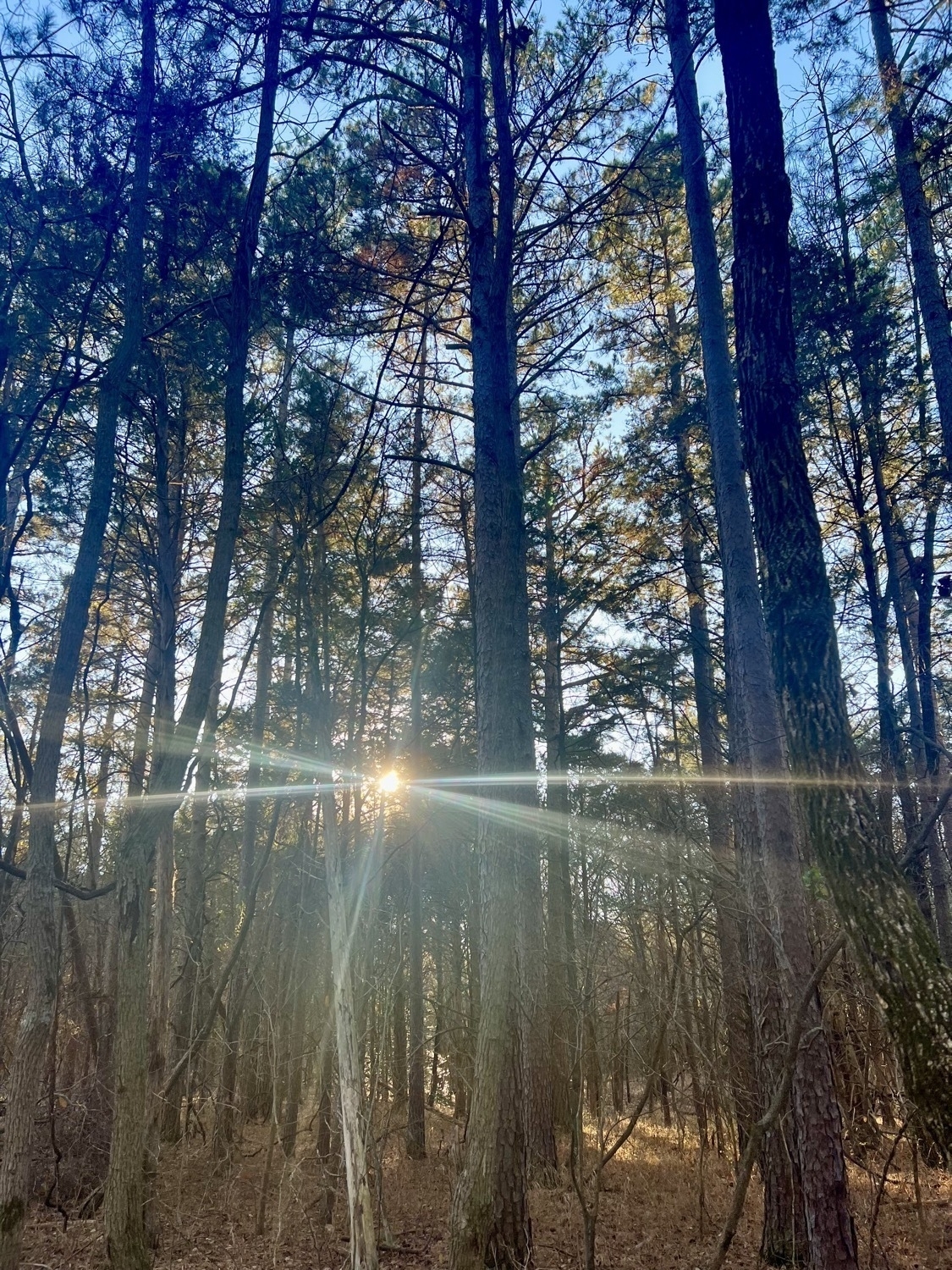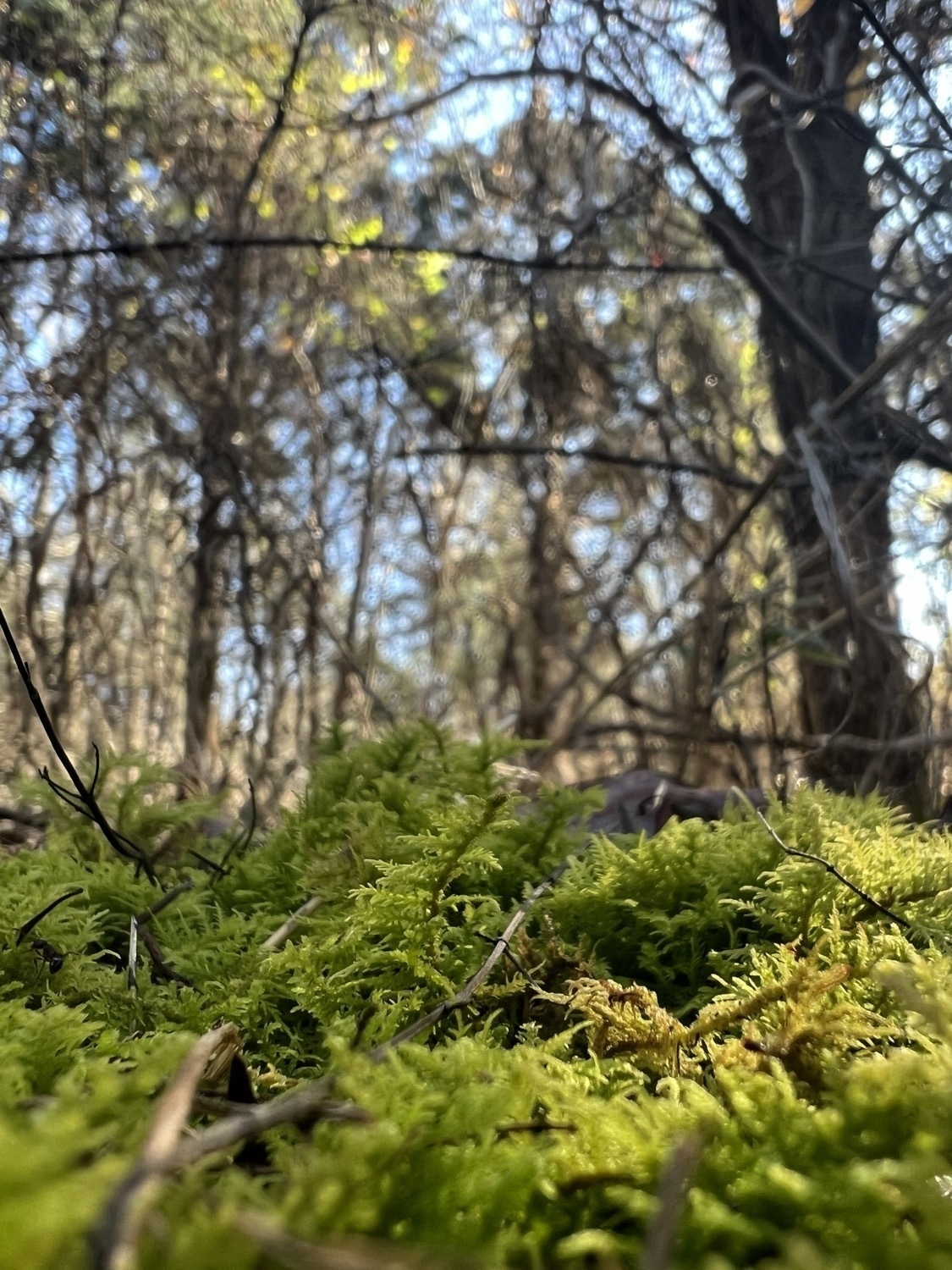Apple's machine learning feels like magic
Over the past year one of the tech stories that I've seen pop up numerous times is that Apple has fallen behind on AI. The general idea being that AI is now to be measured in terms of ChatGBT which has come to represent AI. And, according to this narrative, it follows that since Apple has not produced a similar offering it is behind.
It's a convenient narrative to fall into but it indicates a lack of awareness of what Apple has been doing over the past several years with machine learning. And yes, Apple uses the term machine learning rather than AI. And Apple's offering does not come in the form of a chatbot but rather as a myriad of features to be found throughout its operating systems.
An example that prompted me to start this post. Just moments ago I began watching a video from one of my regular YouTube channels. In it Paul Beckwith is discussing a book synopsis. As he often does he zooms in on his screen and spends time on browser pages of graphs and text. He highlights text as he discusses it. Not for the first time I've wanted to open urls he is discussing. With Apple's machine learning I pause the video, tap/click the url that is visible on the screen in the video:
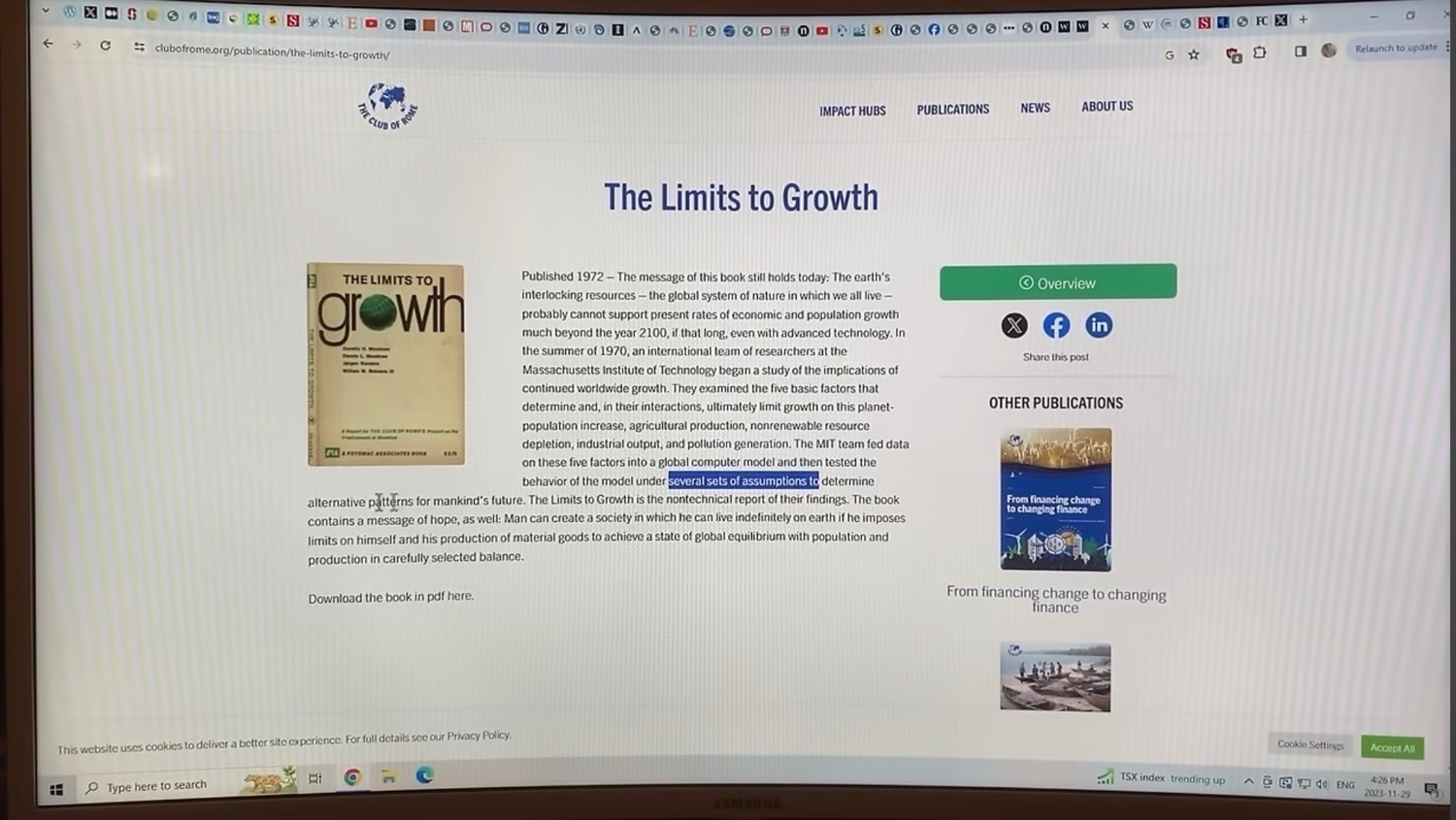 The url field is pretty small. A pencil is best to select. I not, a trackpad/mouse with cursor also works well the select. In either case a pop-up menu is presented for me to open the url. This is all via Apple's text recognition that now works on any image or paused video.
The url field is pretty small. A pencil is best to select. I not, a trackpad/mouse with cursor also works well the select. In either case a pop-up menu is presented for me to open the url. This is all via Apple's text recognition that now works on any image or paused video.

Not all AI looks like a chatbot! This machine learning feature saves me a great deal of time and is a feature I use several times a week.
Another fun and useful example is Photos' machine learning ID feature. Animals, insects, trees, flowers, food items and more. When viewing an image swipe down to get the info panel. If the app recognizes something you'll see a couple of little stars next to the circle i or it will have a tiny little overlay indicating some sort of ID. If it's a bug you'll see a little bug overlay. If it's a plant you'll see a leaf. tap the circle and you'll see a field to tap for more information. If it's a food item you'll get suggested recipes.

Machine learning also powers language translation throughout the system. I use the excellent Mona app for browsing Mastodon and that developer takes advantage of the feature:
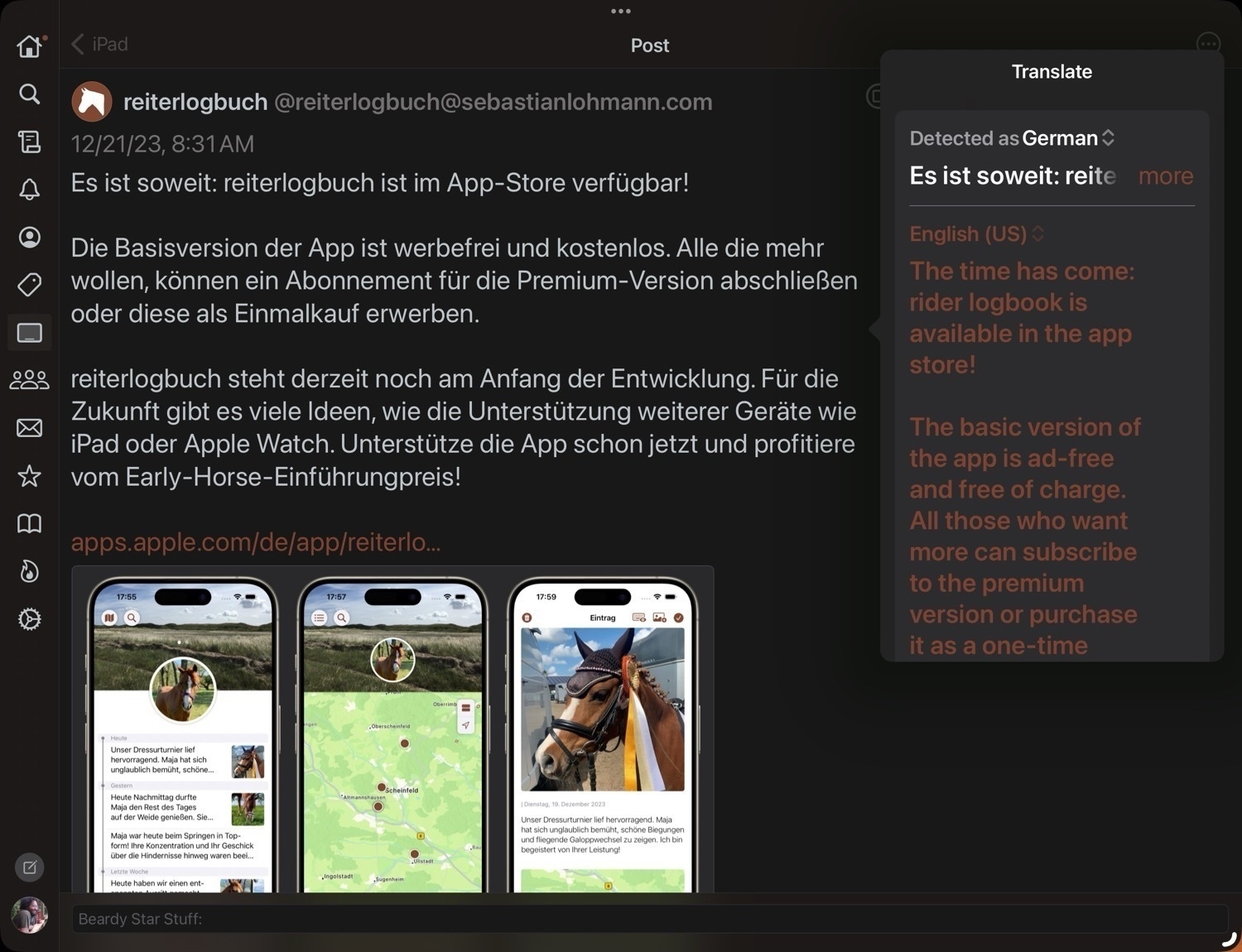
Not only does it work in text areas but I can tap into the image where foreign language is presented in a screenshot. A pop up offers to translate that text as well.
Another recent example is are the new features around scanned forms and pdf forms that don't have form fields. As of the new OS releases in September 2023 Apple devices will now auto-detect form elements from such sources allowing users to type in new data. Take a paper form, scan it and type in your field data. Dictation, voice to text, is another example. Machine learning is everywhere in the OS and the processing is largely on-device rather than cloud based.
Ars Technica has an excellent but somewhat dated article from 2020. Still an interesting read and underscores the point that Apple's been incorporating this tech into both the OS as well as in the processors for years.
Of course much more is coming and in the not too distant future we'll begin to see more obvious features and improvements that people have begun asking for. Most notable, thanks to the visibility of ChatGBT will be improvements to Siri and similar kinds of contextual interactions be they voice or text in nature.
#Apple #iPad #MachineLearning
Climate Link Roundup
The flow of articles reporting on the climate emergency is impossible to keep up with at this point. One after the other as one might expect. My one link per post sampling is far too little and even so tends to fill my blog. Going to shift to a less frequent round-up style with many links per post.
Also, I’m aware that anyone that cares about this is easily able to keep up on their own. And the people that don’t care by now, well, they can go fuck themselves. Nothing I say or share will help them see what is now plain to see. So, at this point my links on the topic are more for my own purposes as a witness to what’s happening.
An international team of climate scientists has recently published a paper warning that the Earth’s vital signs have deteriorated to levels unprecedented in human history, to the point that life on the planet is imperiled.
William Ripple, a distinguished professor in the Oregon State University College of Forestry, and former OSU postdoctoral researcher Christopher Wolf are the lead authors of the report, and 10 other U.S. and global scientists are co-authors.
“Without actions that address the root problem of humanity taking more from the Earth than it can safely give, we’re on our way to the potential collapse of natural and socioeconomic systems and a world with unbearable heat and shortages of food and fresh water,” Wolf said.
Climate tipping points are nearer than you think. Our new report warns of catastrophic risk
It’s now almost inevitable that 2023 will be the warmest year ever recorded by humans, probably the warmest for at least 125,000 years.
Multiple temperature records were smashed with global average temperatures for some periods well above 1.5°C. Antarctic sea ice loss is accelerating at frightening rates along with many other indicators of rapid climate change. Does this mean 2023 is the year parts of the climate tip into a much more dangerous state?
Most people expect that if a system, like someone’s body, an ecosystem, or part of the climate system, becomes stressed, it’ll respond fairly predictably—double the pressure, double the impact, and so on. This holds in many cases, but is not always true. Sometimes a system under stress changes steadily (or “linearly”) up to a point, but beyond that far bigger or abrupt changes can be locked in.
# Earth will soon cross a scary climate change threshold. What happens next?
Month after [record-breaking month](https://www.noaa.gov/news/topping-charts-september-2023-was-earths-warmest-september-in-174-year-record#:~:text=Year%20to%20date%20(YTD%2C%20January,Africa%20seeing%20its%20second%20warmest.), 2023 is on track to be the hottest year measured in human history.
It has been a year of extraordinary drought, deadly rainfall, and searing heat waves. Extreme temperatures even reached underwater. Much of the southern hemisphere basked in summer-like weather through its winter, reaching all the way down to Antarctica.
Particularly notable is that 2023 may mark the first time global average temperatures have risen above a critical line, providing a glimpse into a world where humanity fails to get climate change under control. By the end of the year, some datasets may show the earth’s temperature on average was 1.5 degrees Celsius, 2.7 degrees Fahrenheit, warmer than temperatures before the Industrial Revolution.
Despite climate pledges, Canada and other fossil fuel producers set to scale up production: report
Canada is among a group of top fossil fuel-producing countries on pace to extract more oil and gas than would be consistent with agreed-upon international targets designed to limit global warming, according to a new analysis.
The report, released on Wednesday by the United Nations in collaboration with a team of international scientists, found that countries still plan to produce more than double the amount of fossil fuels in 2030 than would be required to limit warming to 1.5 C above pre-industrial levels.
Fossil fuel lobbyists pour into COP28
[2°C is too high for the world’s ice #COP28](https://m.youtube.com/watch?v=yJKdQZJ30Hw)
“We can’t negotiate with the melting point of ice”. A sobering new report shows that warming of 2 degrees above pre-industrial temperatures will spell disaster for the world’s frozen cryosphere. But as the world’s leaders meet in Dubai to discuss climate action, it’s clear there’s a huge gap between what needs to happen, and what countries are committed to delivering. In this video, I meet Dr James Kirkham, Chief Scientific Advisor for the International Cryosphere Climate Initiative, who is working hard to translate the science in this report into real-world policy
Winter isn’t coming: climate change hits Greek olive crop
3 climate impacts the U.S. will see if warming goes beyond 1.5 degrees
Brace for a potentially record-breaking winter after sweltering summer and autumn, say researchers
Chris Hayes: The war in Gaza must end - YouTube
Difficult to watch but more of the same of what we’ve been seeing the past 2+ months.
The US and Israel are partners in war crimes, genocide and apartheid.
“Science is a way to call the bluff of those who only pretend to knowledge… It can tell us when we’re being lied to. It provides a mid-course correction to our mistakes.”Remembering Carl Sagan, who died on this day in 1996.
Over the years, I have enjoyed my share of animated adaptations of Carl Sagan’s iconic Pale Blue Dot monologue, based on the seminal photograph of Earth taken by the Voyager 1 spacecraft in 1990.
Now comes a lovely motion graphics adaptation by animation studio ORDER — enjoy, and see if you can hold back the chills.
Carl Sagan’s Pale Blue Dot, Animated in Motion Graphics – The Marginalian
Since October 7, Israel has launched a total war on Gaza, indiscriminately bombing the strip and killing over 19,600 Palestinians. This has led some experts to say Israel is guilty of committing genocide in the occupied territory. But what constitutes genocide? Dr. Penny Green and Astha Sharma Pokharel break down the United Nations' definition of genocide, and the stages leading up to it, to explore if it applies to what’s happening in Gaza.
Is Israel Guilty Of Genocide? - YouTube
#Genocide #Gaza
At least 100 elephants have died in Zimbabwe’s largest national park in recent weeks because of drought, their carcasses a grisly sign of what wildlife authorities and conservation groups say is the impact of climate change..
Authorities warn that more could die as forecasts suggest a scarcity of rains and rising heat in parts of the southern African nation including Hwange National Park. The International Fund for Animal Welfare has described it as a crisis for elephants and other animals.
At least 100 elephant deaths in Zimbabwe national park blamed on climate change - CBS News
Israel has shifted the so-called “safe zone” again. First Khan Younis was supposedly safe, but after continuous bombing, Palestinians are now being forced into the barren sands of al-Mawasi. The narrow strip of land, about the size of the airport, is where Israel wants Gaza’s 2.3 million civilians to relocate to. But the small, undeveloped zone has no infrastructure for safety or survival. As Bisan Owda shows us, there is no clean water to drink and not enough fuel to keep people warm.
‘It’s Bisan From Gaza, And Israel Is Forcing Everyone To The Desert' - YouTube
Unexpected App surprises of 2023
Over at the Mac Power Users forums there’s a new thread about 2023 app surprises. I thought I’d also post my response here. The unexpected winners for me were Obsidian, Shortcuts, Siri, and Yoink.
I’ve recently wrote about my Obsidian experience this year but will repost the recap. I tried that Obsidan several times before, but each time decided it wasn’t for me and generally went back to a combination of iA Writer and Notes for writing, notes, and collecting random bits. This time it’s proving a bit stickier. Why different this time?
- I looked a bit further at what didn’t work before. Namely, the interface fonts were too small, especially the sidebar file navigation. Found a fix which made a huge difference.
- Along the same line, I’d previously found the interface to be not quite right. As many have commented, it just felt a bit off. This time I’ve found a theme I like and am enjoying the experience more as a result.
- I added a new purpose/task to the app that I’m enjoying. Daily interstitial journaling. Thus far that’s also fairly sticky and Obsidian seems to be a good place for it. Though, in truth, that could also be done easily in Notes.
- Easy, one tap publishing to micro.blog. I moved away from WordPress entirely and have settled into micro.blog for 2 blogs previously hosted at WordPress. iA Writer has excellent publishing for micro.blog and so does Obsidian (via a plugin).
- I have come to prefer Obsidan’s sidebar over iA Writer for file navigation. Obsidian uses disclosure triangles to dropdown the file list of a folder which seems a bit easier than iA Writer’s use of columns that move one back and forth.
I’m thus far avoiding going crazy with Obsidian plugins. I have no desire to make this my do everything app. For me the job is for interstitial journaling, writing, blogging.
Shortcuts is less of a surprise as I’ve used it quite a bit over the past few years. But I’ve used it even more this year. Actually, I’d describe Shortcuts as a fundamental side-tool to much of what I do. I don’t really look for ways to use it so much as I more easily, naturally recognize processes that can be automated. It’s what Automator never became for me: A fairly easy to use tool for practical automations. Some automations only save me a few seconds, some save me minutes. And, like any tool, it really benefits from use and familiarity.
Siri! I know the popular opinion is that Siri as a big fail. Or at least that’s the way it’s usually discussed. I’ve always found it generally useful and the surprise this year was how much I appreciated the removal of the “Hey” part of the activation. Just a tiny word and tiny bit of friction. But a I use Siri constantly all day, every day I appreciated it immediately. Most used daily actions:
Home actions: Turning things off and on, asking the temperature of locations. Reminders: This is the only way I add things to reminders. It works perfectly almost everytime. Timers: For cooking, fairly often Fact checks and searches: Constantly on the iPad Sending texts while I’m out on walks
Yoink for clipboard management. Jason Snell recently wrote about wanting a native clipboard manager. I agree and would love Apple to add a native clipboard manager but until then Yoink works very well for me. On the M1 iPads it sits in the background monitoring the clipboard for hours everyday. Sometimes I’ll notice that it fell out of memory but that’s not often. With 8GB of memory it seems to be in a perpetual state of monitoring. Less so with an older device. As far as I know it’s the only app in this category (on the iPad/iPhone) that has this sort of background monitoring of the clipboard.
#Apple #iPad #iPadOS
Fossil fuels won at COP28 - YouTube
Another year, another climate summit. …tainted by the influence of record numbers of fossil fuel lobbyists and the blatant hand of fossil fuel companies..
She concludes: “So, we’ve got to take things into our own hands and act in our own spheres as well.”
NPR’s The Sunday Story: Media faces the question of how to cover Donald Trump and his extreme rhetoric
As he campaigns for a second term as President, Trump is increasingly threatening retribution and violent acts if he’s reelected.
They interview the Guardian’s Margaret Sullivan who recently published The public doesn’t understand the risks of a Trump victory. That’s the media’s fault and the Atlantic’s Brian Klaas who recently published: Trump Floats the Idea of Executing Joint Chiefs Chairman Milley.
Is the media is failing to convey the danger Trump poses? Thus far, yes.
I recently had the thought that I wanted to try making waffles so asked on a family messages thread if anyone had a waffle iron I could borrow. My aunt and uncle (also neighbors) offered one of theirs. I added peanut butter and caramel on top of chocolate chip waffles. Oh my, I've been missing out!


We are surrounded by stuff. We buy and buy and buy - it’s the foundation of how our economies run, how they grow. But all this buying, all this economic “growing”, is devastating people and our planet. In the third episode of All Hail The Planet - a series delving into the social, economic and political forces undermining meaningful global action on climate change - Ali Rae speaks with economic anthropologist Jason Hickel, economic sociologist Juliet Schor, and development economist Ndongo Samba Sylla.
Our obsession with economic growth is deadly | All Hail The Planet - YouTube
I can’t sleep. I’m lying in bed every night, and images of Gaza are running through my head. Fathers holding their babies, dead, caked in dust. Bombs dropped on homes, on hospitals, on schools. Tens of thousands of dead in indiscriminate bombings.
In a world where the dark, dystopian visions of Cyberpunk have long dominated our sci-fi imaginations, a new genre emerges as a beacon of hope: Solarpunk
A brief, really enjoyable overview of Solarpunk.
In this Our Changing Climate climate change video essay, I look at how we can decrease overconsumption, overproduction, and consumerism through degrowth. Specifically, I look at why we need degrowth. What exactly degrowth is, and then I explore how we might achieve a degrowth-oriented zero-carbon world.
A study of more than 1,500 species of herbivorous insects in Europe, spanning 34 years of data, has found that 60% of insects are already struggling to keep up with the plants they rely on because climate change is advancing key seasonal timings (phenology), such as plant blooming or insect emergence, earlier in the year, at different rates.
Climate change causing 60% of plants and insects to fall out of sync
A Mac shaped elephant in the room
This post came to mind as I listened to the current episode of the Rebound podcast this morning. The fellas spent the first thirty minutes discussing a variety of bugs and problems that they've been having with their Macs recently. It's something I've often thought of when Mac users critique the iPad but I've never written it down.
They don't just discuss their recent problems but ruminate a bit about the bugginess of macOS in general contrasting OS X with the Classic Mac OS pre 2000s. The specifically call out the fact that they're advanced users and the occasional difficulty of troubleshooting and the process of fixing problems that arise not from user errors but bugs. They discuss rooting around various directories normally invisible to users for cache files, etc.
I started using a Mac in 1993 with System 7.6 on a Color Classic. Though it could be buggy and often required restarts, Mac OS was a pleasure to use. I remember excitedly installing the OS X public beta and though it had its bugs and was not as snappy as Mac OS I loved it from the start. It got better. It was rock solid in terms of system uptime. A huge improvement. And it didn't take long to see the snappiness return.
22 years later users will still encounter bugs because computers are computers. Every year we get a new version of the OS, and in between, updates are released all the time to fix bugs, introduce features, and optimize. It never ends. And the OS of today is far more capable and complex than those of 22 years ago.
This brings me to iOS and iPadOS. Bugs? Yes. They are computers after all. But generally speaking, the experience of using an iPhone or iPad is far easier and safer than a Mac.
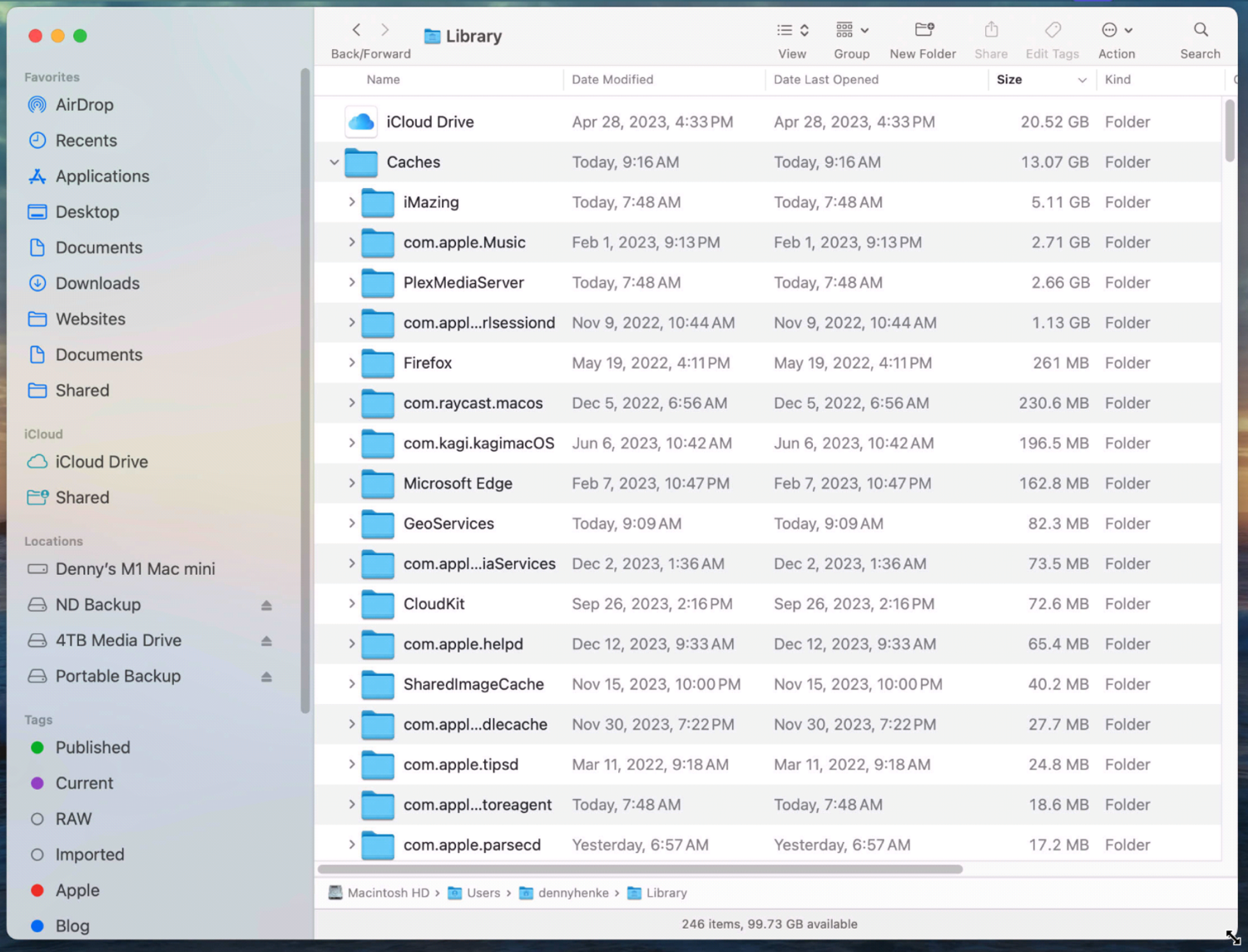
And while “power users” and pundits that prefer the Mac continue to deride iPadOS and the iPad as a “baby computer” it’s also true that iPad users do not have to waste hours upon hours digging through User>Library>Caches or User>Library>Application Support or some other directory to track down and delete files hoping to fix the problem.
My elderly parents have been using iPads for 13 years with none of the problems that come with the Mac. Same for aunts and uncles. My granny, in the last 10 years of her life was able to use her iPad to stay connected to family and reconnect with old friends thanks to the iPad. On a daily basis she emailed, checked Facebook and used Apple Messages to check in with everyone. She was able to create and manage a photo library and download games. The iPad was her first computer and she did it all with practically zero need for support.
And at the opposite age spectrum the iPad is often the first computer for many kids. The point is that the iPad is a generally safe and stable computer that requires near-zero maintenance.
And, I will add here that through slow and careful iteration, Apple has gradually built a far more capable iPadOS. The iPad Pro running iPadOS 17 is far closer to the Mac experience than any iPad before it. With a far more robust Files app, windowing, external display support and cursor, I have no problem with more complex workflows. More powerful but without the need for troubleshooting problems found on a Mac.
- With Textastic and the Files app I manage thousands of files in client websites.
- As of 2023 fully featured "desktop" class apps like the Affinity suite from Serif are the tools I need to produce annual reports, newsletters and brochures for clients.
- I use Safari and Numbers to help a client manage thousands of records in his email lists as well as class/workshop enrollments at his retreat.
- I use Ferrite, Safari, iA Writer, Textastic and the Files app to produce and publish a series of oral histories for the local library.
- I used Numbers and Procreate for my amateur astronomy recording of observations and occasional sketching/painting of astronomical objects.

A photo realistic painting of the Horsehead Nebula made with Procreate on the iPad
That's a sampling of a larger list of things I do with the iPad. For my work, hobbies and general needs I've found that the iPad is the computer I need and want. I can enjoy doing the work without the time spent trouble-shooting problems and bugs I didn't ask for.
I'm happy we have choices. I've happily made mine and am content. I expect in the coming year with new iPad hardware on the way we'll continue to hear from frustrated pundits about how iPadOS is still too limited to get anything done. No, it's not open the way a Mac is. Yes, it's still missing some features and apps have to be installed via the App Store. But nor does it have the headache inducing, time-suck problems that the Mac often brings with it. No doubt, there are users that will still need one of the more open operating systems but they'll also need to spend more time doing maintenance. Some even enjoy that stuff. I certainly did. Past tense.
My unsolicited advice:
- If you truly feel drawn to the iPad then learn how to use it. Really learn how to use it. It's not that different from the Mac. But be patient, spend time with it and understand it feels different from the Mac. Similar, but not the same.
- Going to say that again: Similar, but not the same. Don't expect it to be exactly the same. That leads to frustration.
- Get a keyboard, mouse, trackpad.
- You'll want the big screen if you want to use this like a full-on computer.
- Before you jump in make a list of the things you need to do with a computer and compare to the things that can't be done on an iPad.
If the iPad can do all the things you need to do, I'll reiterate, accept that it is similar but different and will require that you spend time getting comfortable with the differences. In most ways, it is very near to a Mac experience. The Files app is a good example. Very similar but not exact.
If you're coming from a Mac you're used to a big screen so, GET THE BIG SCREEN if you want to do computery things. Also, consider connecting to an external display.
Last, if this is just a performative stunt to re-write the same story already written a thousand times, just spare us the click-bait waste of time and stick with your Mac. Thanks in advance!
The latest Team Human podcast is an excellent discussion with Carne Ross about democratic confederalism as a bottom-up form of human social organization. Put another way, community-based democracy and economics.
Fantastic.
